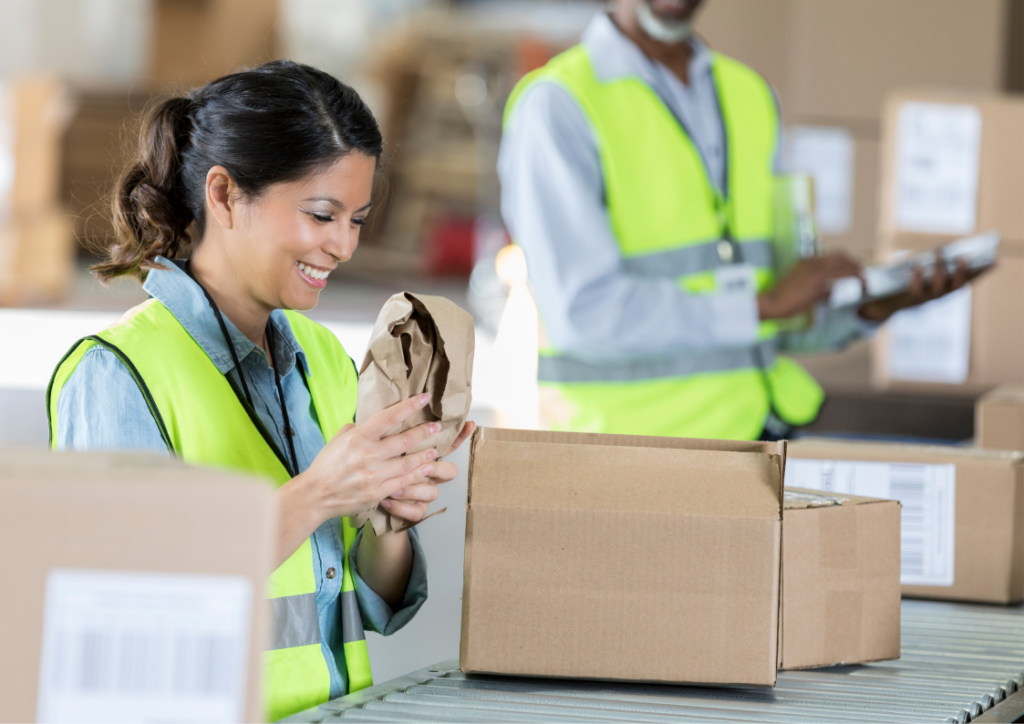
As environmental concerns continue to grow, manufacturers worldwide are making significant strides toward adopting eco-friendly packaging practices. This shift towards sustainable packaging not only benefits the environment but also aligns with consumer preferences for products that are environmentally responsible.
This article will explore the importance of eco-friendly packaging in manufacturing, its global impact, and the innovative practices shaping a greener future for packaging.
The Environmental Toll of Conventional Packaging
Before delving into eco-friendly packaging, it’s essential to understand the environmental impact of conventional packaging. Traditional packaging materials used in manufacturing, such as single-use plastics, are notorious for contributing to pollution, greenhouse gas emissions, and resource depletion. Here are some eye-opening facts:
- Plastic Pollution: Every year, approximately 14 million tons of plastic waste enter our oceans, harming marine life and ecosystems. Most of this plastic waste comes from packaging products we consume daily.
- Greenhouse Gas Emissions: The production of conventional packaging materials, like plastic and aluminum, generates substantial carbon emissions, contributing to climate change.
- Resource Depletion: The extraction of finite resources, such as petroleum for plastic production, depletes natural reserves and accelerates environmental degradation.
Eco-Friendly Packaging Materials
Eco-friendly packaging in manufacturing focuses on reducing environmental footprint by using sustainable materials. Here are some of the leading materials and practices:
- Recycled Materials: Manufacturers increasingly use recycled materials, such as post-consumer recycled (PCR) plastics, paper, and cardboard, to create packaging. These materials reduce the demand for new resources and divert waste from landfills.
- Biodegradable and Compostable Materials: Biodegradable plastics and compostable packaging materials break down naturally, causing minimal environmental harm. They are beneficial for single-use items like cutlery and food containers.
- Plant-Based Packaging: Plant-based materials, such as bamboo, cornstarch, and sugarcane, are renewable resources that can create eco-friendly packaging. They have a lower environmental footprint compared to conventional materials.
- Minimalist Design: Reducing excess packaging and opting for minimalist design not only conserves resources but also lowers transportation costs and emissions, making it eco-friendly.
Global Impact of Adopting Sustainable Packaging in Manufacturing
The shift towards eco-friendly packaging in manufacturing has far-reaching global consequences, benefiting both the environment and society:
- Reduced Waste and Pollution: By using recycled materials and biodegradable alternatives, manufacturers help reduce waste and mitigate pollution, notably plastic pollution in oceans and landfills.
- Lower Carbon Footprint: Sustainable packaging practices decrease greenhouse gas emissions by using less energy-intensive materials and reducing transportation-related emissions through optimized packaging designs.
- Conservation of Natural Resources: Adopting eco-friendly materials and minimalist design conserves valuable natural resources, including water and fossil fuels.
- Enhanced Brand Reputation: Companies prioritizing sustainability in their packaging gain a competitive edge and enjoy a positive image in the eyes of eco-conscious consumers.
- Economic Benefits: Sustainable packaging practices can save costs in the long run through reduced material and transportation expenses.
Global Initiatives for Sustainable Packaging in Manufacturing
The global community recognizes the importance of sustainable packaging practices and has taken several initiatives to promote their adoption:
- The Ellen MacArthur Foundation’s New Plastics Economy: This initiative seeks to create a circular economy for plastics, in which plastics are designed to be reused, recycled, or composted, thus reducing plastic waste.
- United Nations Sustainable Development Goals (SDGs): The SDGs include responsible consumption and production goals, emphasizing the need for sustainable packaging practices as part of a broader sustainability agenda.
- Government Regulations: Many governments have implemented regulations and policies to reduce single-use plastics and promote sustainable packaging. For example, the European Union has banned single-use plastics in various forms.
- Consumer Pressure: Consumers increasingly demand eco-friendly packaging, and their preferences influence manufacturing practices. Brands are responding by adopting sustainable packaging solutions to meet market demands.
Innovations in Sustainable Packaging in Manufacturing
Adopting eco-friendly packaging in manufacturing has led to remarkable innovations in the field. Some notable advancements include:
- Edible Packaging: Researchers are developing edible packaging made from materials like seaweed and rice that can be safely consumed or biodegraded.
- Water-Soluble Films: Water-soluble packaging films dissolve upon contact with water, reducing waste and potential environmental harm.
- Smart Packaging: Smart packaging technologies, such as QR codes and sensors, provide consumers with information about product freshness and usage, helping reduce food waste.
- Reusable Packaging: Many companies are introducing reusable packaging systems, where customers can return empty containers for refilling, reducing single-use packaging waste.
